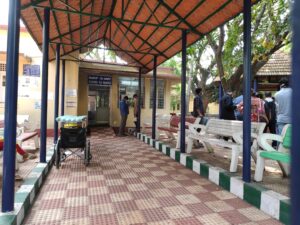
Eight COVID-19 patients in the Karnataka state capital Bengaluru have been found to have contracted a rare fungal infection.
Six of the eight people who contracted COVID-19 – caused severe acute respiratory syndrome coronavirus 2 (SARS-CoV-2) or, simply, coronavirus – died while also having contracted sino-orbital invasive disease. This disease, caused by the fungus Mucormycosis, has left the two surviving patients with potentially lasting effects on their vision as the condition attacks the eye sockets and sinuses. The disease can prove lethal should it reach the brain.
The patients in question were admitted to the Bangalore Medical College and Research Institute (BMCRI) and their cases studied by researchers at the associated Minto Regional Institute of Ophthalmology. For the two who survived and are experiencing vision loss, it’s far from good news.
“The two patients who survived are males aged 37 and sixty,” said Dr B. L. Sujatha Rathod, the director of the Minto Regional Institute of Ophthalmology. “Their chances of vision recovery are poor. It is an irreversible cause of vision loss.”
Fungal infection in those with COVID-19 is indeed a cause for concern. A study published in September of last year concluded that “COVID-19 is associated with a significant incidence of secondary infections, both bacterial and fungal probably due to immune dysregulation. Additionally, the widespread use of steroids/monoclonal antibodies/broad-spectrum antibiotics as part of the armamentarium against COVID-19 may lead to the development/exacerbation of preexisting fungal diseases.
“Physicians should be aware of the possibility of invasive secondary fungal infections in patients with COVID-19 infection especially in patients with preexisting risk factors and should enable early diagnosis and treatment with the subsequent reduction of mortality and morbidity. The use of therapeutic agents should be monitored to achieve a therapeutic effect at the lowest dose and shortest durations. The use of broad-spectrum antibiotics, especially in the absence of infection, should be re-evaluated.”
In the case of the eight Bengaluru patients, and indeed the broader Indian context, the use of certain treatments is apposite according to Dr K. Kiran Kumar, an associate professor at the Minto Regional Institute of Ophthalmology who headed the study. However, it is not the final word on the matter.
“The usage of steroids in treatment of COVID-19 could be one of the risk factors, but the same cannot explain the incidence of co-infections in the patients we studied,” Kumar said. “Hence, there is a need to look for other mechanisms for this rising trend.”
